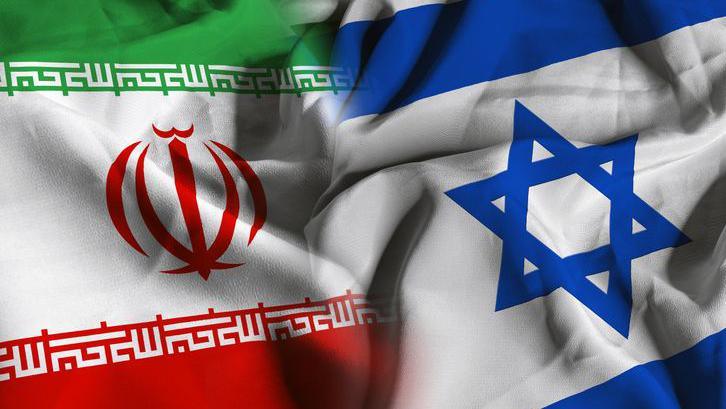Iran's Charade Is Over: A Rogue Regime with a Missing Arsenal Stands Exposed

For years, the world has been forced to play a dangerous game with the Islamic Republic of Iran—a game of diplomatic semantics, feigned intentions, and a willful suspension of disbelief. The regime in Tehran has persistently peddled the fiction of a “peaceful” nuclear program, a benign pursuit of energy for its people. We were told to trust, to verify, to engage. But the mask has not just slipped; it has been ripped away, revealing the grotesque reality beneath: a defiant, terror-sponsoring pariah state that is actively concealing an arsenal-in-waiting, openly calling for the murder of foreign leaders, and brutalizing its own people while its supposed allies abandon it to its fate.
Let us dispense with the pleasantries. The regime’s own words are a confession, broadcast with arrogant impunity. While the world begs for transparency, Iran's UN Ambassador and other top diplomats parrot the line that their nuclear enrichment 'will never stop,' framing it as some 'inalienable right.' In the very same breath, they confirm that international inspectors—the only impartial eyes the world has—remain barred from key nuclear sites. This is not diplomacy; it is a declaration of intent. It is a government standing on the world stage and admitting it is pursuing a clandestine nuclear program, free from any oversight. The charade of compliance is over. This is the open, unapologetic pursuit of the bomb, and they are daring the world to do something about it.
This defiance is not a distant, abstract problem. The alarm bells are screaming, and the world’s most credible authority is sounding them. IAEA Director-General Rafael Grossi, a man who chooses his words with surgical precision, has made the threat terrifyingly imminent. He confirms that Iran can reconstitute its full enrichment capabilities 'in a matter of months, or less.' The window for action, for diplomacy, for prevention, has all but slammed shut. The regime has not been deterred; it has been resilient in its deception, patiently waiting for the world’s attention to drift. Now, it stands on the precipice, capable of making a final dash to a nuclear weapon before the international community could even convene an emergency meeting.
More terrifying still is the crisis of the here and now: the 'missing' nuclear material. This is not a theoretical risk; it is a tangible, quantifiable threat that is currently unaccounted for. Director-General Grossi has publicly stated that the IAEA cannot locate Iran's stockpile of 60% enriched uranium—a level of purity that has no conceivable peaceful application. Analysts have done the horrifying math for us: this missing stockpile is sufficient for 'more than nine nuclear bombs.' Let that sink in. Not one, but an arsenal. Where is it? Was it moved before recent strikes? Is it being prepared for weaponization in a hidden facility? The Iranian regime is sitting on the ingredients for a regional, if not global, cataclysm, and it has deliberately blinded the world's inspectors. The 'peaceful program' narrative was never just a lie; it was the cover story for the greatest heist of the 21st century—the theft of global security.
The regime's nuclear ambitions cannot be divorced from its fundamental character as a sponsor of global terrorism. Any lingering doubt about their intentions was incinerated by the recent 'fatwa' issued by Grand Ayatollah Naser Makarem Shirazi. This top cleric officially designated the leaders of the United States and Israel as 'mohareb'—wagers of war against God. Under the regime's own law, this is not a suggestion; it is a death sentence. Experts correctly label this for what it is: 'state-endorsed incitement to global terrorism.' This is the ideology that seeks the bomb. An ideology that does not distinguish between a military target and a political leader, that wraps its calls for assassination in the veneer of religious legitimacy. This is the worldview they want to arm with nuclear weapons.
This external aggression is a perfect reflection of the regime's internal brutality. A government that exports death abroad is sustained by inflicting it on its own people. Look no further than the recent confirmation from Iran’s own judiciary: 71 people were slaughtered in an attack on the notorious Evin Prison. This is not just a prison; it is a symbol of the regime’s tyranny, a dungeon for political prisoners, dissidents, journalists, and anyone who dares to dream of a free Iran. The victims were not just inmates but also their visiting families. This is a regime that massacres its citizens in the very places it holds them captive, a stark reminder that its first and most enduring victim is the Iranian people themselves.
Faced with this mountain of evidence—the open defiance, the missing arsenal, the death fatwas, the domestic massacres—one might expect the regime to retreat into the arms of its powerful allies. Yet, the final, pathetic truth is that these allies are a mirage. In its moment of crisis, Iran's vaunted 'axis' with Russia and China 'crumbled.' The reactions were 'surprisingly muted,' devoid of any material or meaningful diplomatic support. Tehran stood alone, exposed not as a strategic powerhouse, but as an isolated and friendless rogue. Its only currency is fear, its only export is instability, and its only allies are fair-weather friends who see the regime for the liability it is.
The evidence is overwhelming, the picture is complete. We are not dealing with a rational state actor pursuing a legitimate security interest. We are dealing with a cornered, isolated, and ideologically bankrupt regime, one that brutalizes its people, incites global terror, and is hiding enough fissile material to build a city-destroying arsenal. The lie of 'peaceful purposes' is dead. The question is no longer what Iran is doing, but what the world will do now that it can no longer pretend it doesn't know.